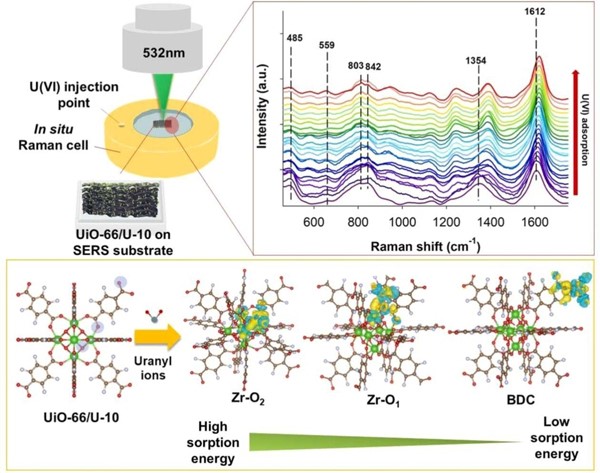Prof. Min Jang's Research Team Develops Technology for Producing Granulated 3D Graphene-metal
- admin
- 2024-09-13
- 39
· Professor Min Jang's Research Team (Department of Environmental Engineering) Develops Technology for Producing Granulated 3D Graphene-metal Organic Framework Adsorbents for High-efficiency Uranium Adsorption
-
Published
in the scientific journal Journal of Hazardous Materials (IF 12.2, JCR Rank:
top 3.5% in the field of environmental science) -

The research
team of Professor Cho-eun Jong (first author) and Professor Min Jang
(corresponding author, deputy director of PBRC, and director of the
Environmental Nanotechnology Laboratory (JENTL2)) from the
Department of Environmental Engineering, together with Professor Yoon-Young
Jang, Professor Jae-Gyu Yang, and Professor Eun-Ha Choi (director of PBRC) from
the Department of Electrical & Biological Physics, developed a material
that can adsorb and remove uranium (U) from water with high efficiency. According
to a 2022 report from Yonhap News1, uranium, a radioactive
substance, was detected at levels above the safety standard in 2% of the
groundwater wells dug by individuals for drinking water. The Ministry of
Environment and the National Institute of Environmental Research announced that,
out of 7,036 private groundwater wells surveyed, 2.1% (148 wells) exceeded the
uranium safety standard of 30 ?g per liter. As a result, urgent water treatment
has been recognized as necessary.
The research
team developed a manufacturing method by first producing granulated 3D graphene
oxide (3D-GO), then doping and synthesizing the metal-organic framework (MOF)
UiO-66 onto the 3D-GO. In the U(VI) adsorption isotherm experiment, the
adsorbent containing 10% UiO-66 (3D-GO/U-10) demonstrated a very high adsorption
capacity of 375.5 mg/g and maintained strong U(VI) adsorption performance
across a wide pH range. Interestingly, when UiO-66 was introduced to the 3D-GO,
the UiO-66 particles did not agglomerate and were evenly doped.
Through in-situ
surface-enhanced Raman spectra and density functional theory simulations, it
was found that the Zr-O₂ structure in
UiO-66, with a symmetric metal at the center, has the highest adsorption energy
for U(VI) (-3.21 eV). The electron transfer from the oxygen atom to U(VI)
induces covalent bonding between the Zr-O₂ in 3D-GO/U-10
and U(VI). The 3D-GO/U-10 saturated with U(VI) achieved a very high
regeneration efficiency over five regeneration cycles using a 0.1 M Na₂CO₃/0.01 M H₂O₂ solution, with
a U(VI) removal rate of 89.7% on the fifth regeneration. In continuous flow
column experiments, 3D-GO/U-10 consistently maintained approximately ~76% of
its U(VI) removal capacity over a maximum of four column cycles. The
high-efficiency adsorbent developed in this project can selectively adsorb
U(VI) in various environments, demonstrating potential for treating uranium in
actual groundwater.
This research was
supported by the Ministry of Environment (Grant 2020002470002) and the National
Research Foundation of Korea (University Research Center 2021R1A6A1A03038785,
Mid-Career Researcher Program 2023R1A2C1003464, and Research Staff Program
RS-2023-00240726). The research results were published online in July 2024 in
the scientific journal Journal of Hazardous Materials (IF: 12.2) under the
title 'Fabrication of Granular Three-Dimensional Graphene Oxide/UiO-66
Adsorbent for High Uranium Adsorption: Density Functional Theory and Fixed Bed
Column Studies.'
1
Yonhap
News: https://www.yna.co.kr/view/AKR20220728057000530
2 JENTL Website: https://www.jentl.net/
Web link:
https://doi.org/10.1016/j.jhazmat.2024.135237
?